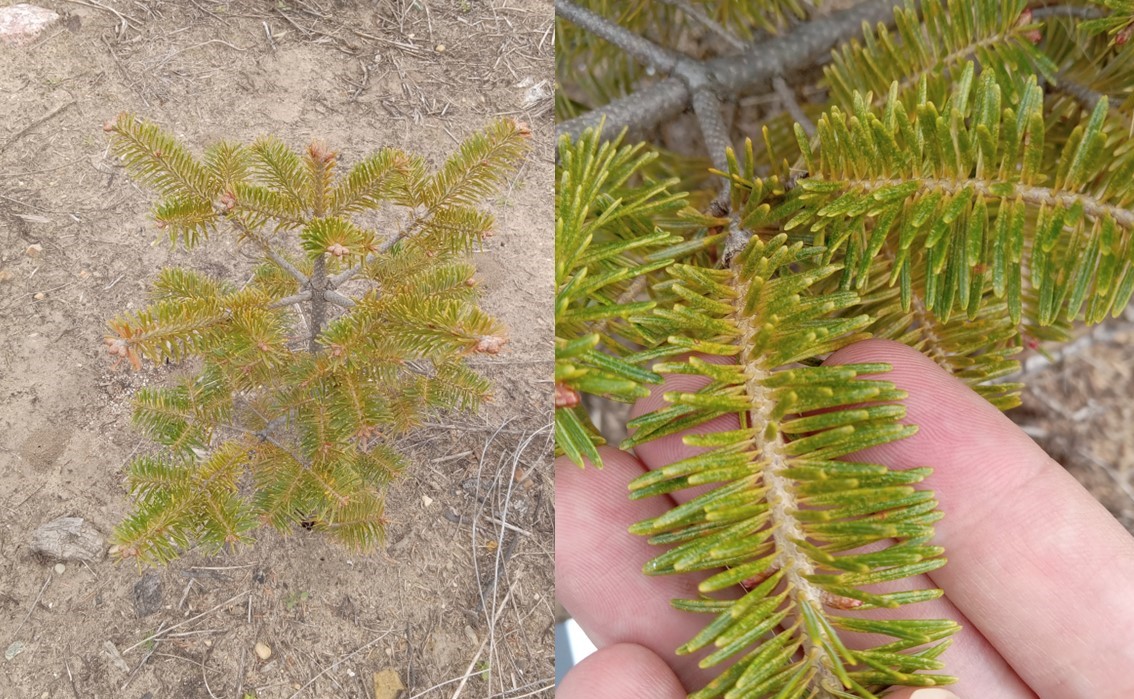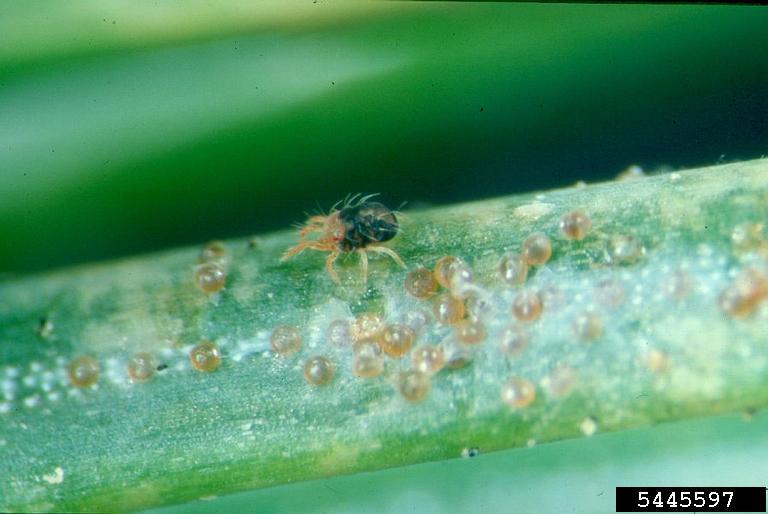Christmas tree update – May 11, 2023
Be prepared for warm temperatures and increased pace of pest and disease development.

Weather update
Michigan has had a mixed bag of weather over the last couple weeks. Cooler temperatures have drastically slowed down accumulation of growing degree days (GDD50). Based on your farm location, GDD accumulation for 2023 is now about normal (most of Michigan) or slightly ahead of normal (northern Lower Peninsula) (Photo 1). The future weekly weather forecast shows a warming trend that will push development further ahead of normal again. Current GDD50 values range from about 200 in the southern Lower Peninsula to 50 in the Upper Peninsula. Keep in mind, Christmas tree and associated pest development is not based on calendar date but by heat accumulation.
Farm reports
Most growers have finished tree planting for 2023 (Photo 2). Preemergent herbicide applications, if not already done, should be applied soon (prior to budbreak). Treatments for early season pests, such as white pine weevil and Zimmerman moth, have been completed. Fertilizer applications will be applied soon, and should be targeted two weeks prior vegetative budbreak. Cones are starting to emerge (Photo 3).

Pest management
Spruce spider mite can be a significant problem in tree plantations. Mite damage from 2022 can be easily found (Photo 4). Spruce spider mite egg hatch occurs around 150 GDD50, which depending on your location has occurred or will soon. Michigan State University Extension recommends monitoring levels of this pest over 2023. Scout fields at two-week intervals over the course of the growing season. Scout trees by brushing branches onto a white scouting board. Record the percentage of trees inspected that have spruce spider mite. Spruce spider mite adults are dark green or brown, while eggs and immature stages will be red (Photo 5).
It is possible to have multiple life stages of spruce spider mite simultaneously on a single tree. Spruce spider mite prefer cool, humid conditions and are often found on the interior of the tree. Treatment thresholds are based on tree size and percentage of trees that are found to have mites (Table 1).


Cultural control practices for spruce spider mite
Mite outbreaks tend to be worse on farms that use broad-spectrum insecticides such as pyrethroids. These products work well, but unfortunately tend to reduce predatory mite populations in addition to the target pest. With less predators, spruce spider mite populations can quickly build out of control. Limit the use of broad-spectrum insecticides whenever possible.
You can also aim to increase beneficial insect populations by increasing their food sources. White clover can provide predator mites with additional food sources (white clover mites) and thereby increase their population levels in tree plantations.
Chemical control options for spruce spider mite
Dormant applications of a horticultural oil can be made prior to budbreak. Excellent spray coverage is essential with the goal of suffocating overwintering spruce spider mite eggs. For most growers in Michigan, tree development has exceeded the point where this can be a viable option. Other chemical control options include miticide products. Check MSU Extension’s Michigan Christmas Tree Pest Management Guide for specific recommendations. Always follow label instructions.
|
Table 1. Spruce spider mite treatment thresholds. Adapted from Jill O’Donnell and North Carolina State University. |
|
|---|---|
|
Size of tree |
Treatment threshold |
|
Less than waist high |
40% |
|
Waist high or taller |
20% |
|
During year of harvest |
10% |
Fungal diseases
Growers that have had fungal diseases such as stimgita, swiss needlecast, brown spot, etc. should prepare their equipment for fungicide applications. For pesticide recommendations, refer to the Michigan Christmas Tree Pest Management Guide. Applications should be made soon after budbreak and repeated every two to three weeks for a month. Labeled fungicide products work only as a protectant, meaning the product needs to be in place on the needle prior to infection occurring. New needle growth is unprotected, and fungicide effectiveness can be reduced due to precipitation.
For management information and upcoming events, sign up to receive MSU Extension’s Christmas tree production newsletter. For general information, visit MSU Extension's Christmas Trees website.



 Print
Print Email
Email

